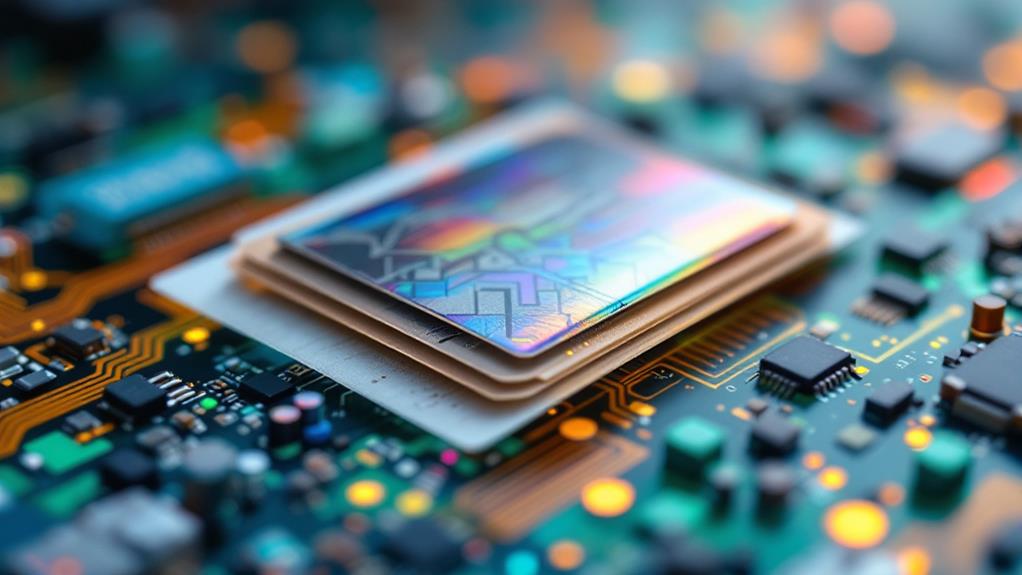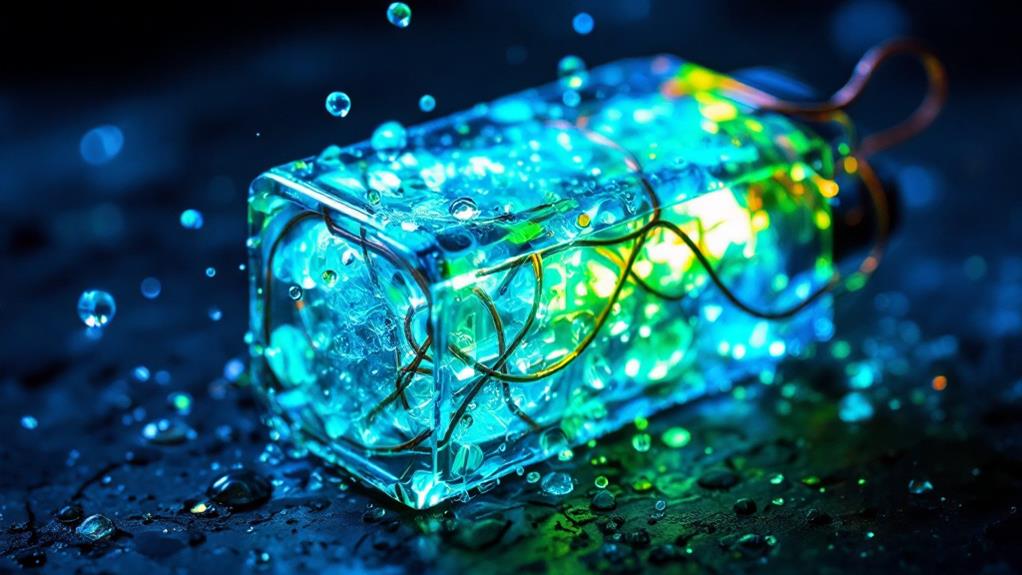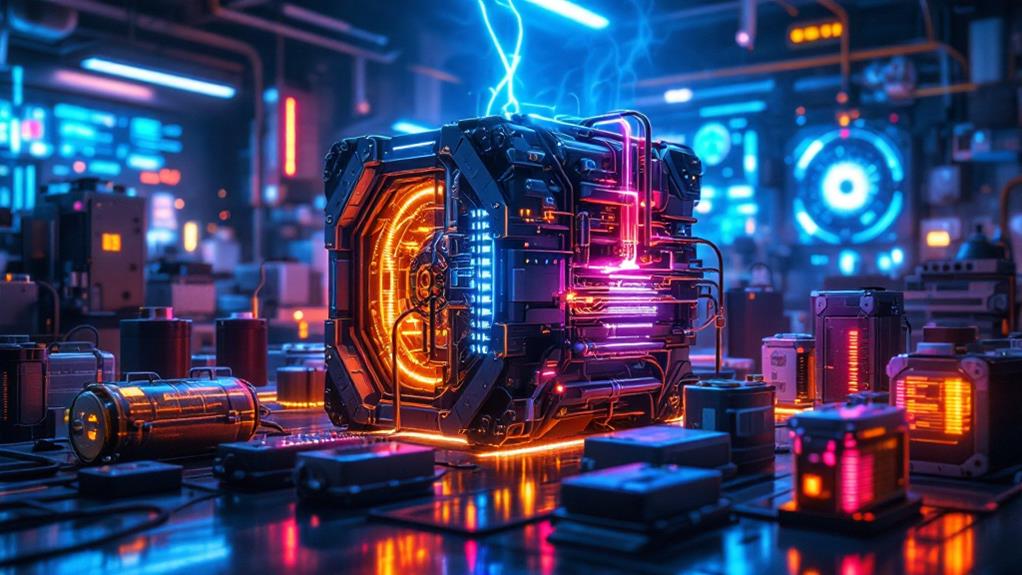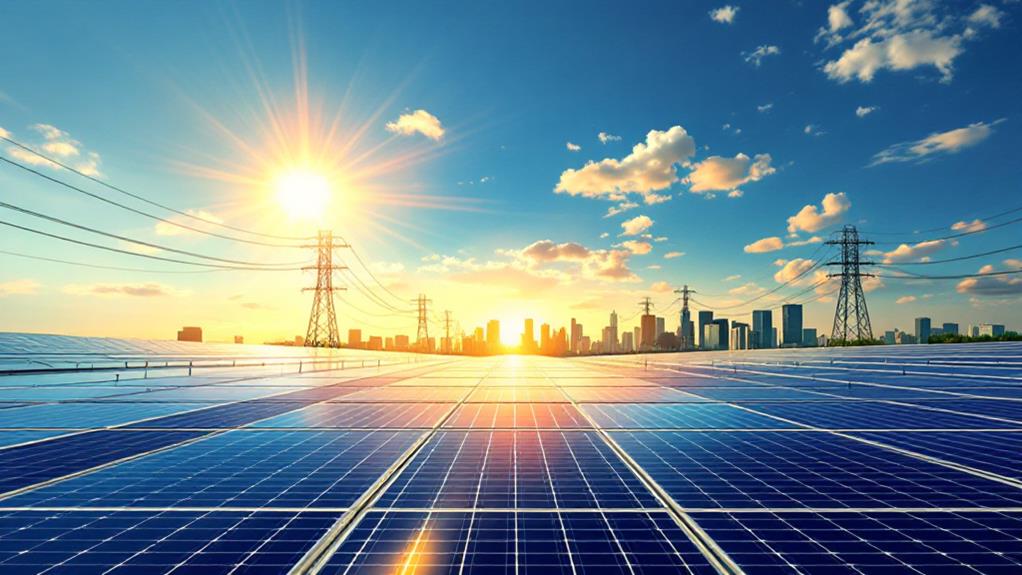Finding Unusual and Weird Batteries: A Guide to Niche Power Solutions

Exploring unusual and weird batteries can redefine your approach to sustainable energy. Immerse yourself in the world of microbial fuel cells, where microbes generate electricity from organic compounds. Algae-powered cells utilize sunlight for eco-friendly energy, while saltwater batteries offer non-flammable, recyclable solutions. For compact options, paper-based batteries mix cellulose and carbon nanotubes for lightweight power. Nuclear batteries and thermoelectric generators offer long-lasting and efficient energy sources. Investigate crystal-based energy for durable outputs, or opt for flexible designs that adapt to wearables. Each unique battery type holds the potential to transform energy use in ways you may not expect.
Microbial Fuel Cells
Microbial fuel cells (MFCs) are a groundbreaking technology that harnesses the power of microorganisms to generate electricity. When you delve into the world of MFCs, you'll uncover that microbial diversity plays a vital role in how these systems work. Different microorganisms can break down organic materials in wastewater or soil, releasing electrons as a byproduct. These electrons flow through a circuit, generating electricity. By selecting diverse microbial communities, you can optimize the performance of the MFC, as distinct microbes contribute to different stages of the degradation process.
Energy efficiency is another important aspect of MFCs. You're looking at a technology that not only generates power but does so in an environmentally friendly way. MFCs convert chemical energy from organic compounds directly into electrical energy with minimal energy loss. As you investigate their applications, you'll find that they're particularly useful in areas where traditional power sources are impractical or too expensive. From powering remote sensors to treating wastewater while producing electricity, MFCs offer a dual benefit. By focusing on microbial diversity and energy efficiency, you're tapping into a sustainable power solution that holds promise for a greener future.
Nuclear Batteries
How do nuclear batteries offer a unique solution to power generation challenges? They utilize radioactive isotopes to produce energy in a highly efficient manner. Unlike traditional batteries, nuclear batteries boast an impressive energy density, meaning they can deliver a substantial amount of power over long periods. This makes them ideal for applications where battery replacement is challenging or impossible, such as in space exploration or remote sensing devices.
When considering nuclear batteries, keep in mind the following:
- Longevity: Nuclear batteries have an incredibly long lifespan. Thanks to the slow decay of radioactive isotopes, these batteries can last for years, even decades, without needing replacement. This longevity is vital for powering devices that are difficult to access, like spacecraft or deep-sea sensors.
- Energy Density: The energy density of nuclear batteries is much higher than that of conventional batteries. This means they can store and supply more energy relative to their size and weight, making them efficient for long-term, low-maintenance applications.
- Safety: While they use radioactive materials, nuclear batteries are designed with safety in mind. The radioactive isotopes are typically encapsulated in materials that prevent radiation leakage, ensuring safe operation under normal conditions.
Paper-Based Batteries

A fascinating innovation in the domain of sustainable energy, paper-based batteries offer a promising alternative to traditional power sources. Imagine a power solution made from sustainable materials that doesn't compromise on performance. These batteries use cellulose from paper, combined with carbon nanotubes, to create a lightweight, flexible, and environmentally friendly energy source. You'll appreciate their potential to reduce electronic waste and reliance on toxic metals used in conventional batteries.
Paper-based batteries are not just eco-friendly; they also pack a punch regarding energy density. You might be surprised to learn that these thin, flexible sheets can deliver a substantial amount of power relative to their size. This makes them ideal for small electronic devices, sensors, and even medical implants. Plus, their ability to biodegrade guarantees that they won't leave a lasting impact on the environment once disposed of.
When exploring alternative power solutions, consider how paper-based batteries align with sustainability goals. They're at the forefront of innovation, marrying the use of sustainable materials with impressive energy density. As technology advances, you'll likely see these batteries integrated into more everyday applications, offering a cleaner, greener power solution.
Algae-Powered Cells
As we investigate more eco-friendly power solutions, algae-powered cells emerge as a compelling alternative. Imagine harnessing the power of tiny, photosynthetic organisms to generate electricity. Algae cultivation is the backbone of this groundbreaking technology, transforming sunlight into energy with remarkable efficiency. You've probably seen algae covering ponds or fish tanks, but in this scenario, they're a powerhouse waiting to be utilized. The beauty of algae lies in its rapid growth and minimal resource requirement, making it a sustainable choice for the future.
Here's what makes algae-powered cells a captivating option:
- Energy Efficiency: Algae cells convert sunlight into energy efficiently, providing a renewable source of power that doesn't rely on fossil fuels. This can greatly reduce your carbon footprint, making it a win for the environment.
- Scalability: Algae can be cultivated in different environments, from small-scale systems in your backyard to large industrial setups. This flexibility means you can tailor algae farming to your specific energy needs.
- Bioproducts: Beyond electricity, algae cultivation can yield valuable byproducts like biofuels and fertilizers, adding more value to your energy solution.
Exploring algae-powered cells could be your next step towards sustainable living.
Saltwater Batteries

Engage yourself in the world of saltwater batteries, a promising and eco-friendly alternative to traditional energy storage solutions. You might be wondering how these batteries work. Well, they utilize a saline solution as an electrolyte, which is safer and more environmentally friendly than the corrosive chemicals found in conventional batteries. The materials used in saltwater batteries can be recycled, greatly reducing their environmental impact. So, if you're concerned about sustainability, these batteries offer an excellent choice.
When it comes to energy density, saltwater batteries might not match the capacity of lithium-ion alternatives. However, they excel in other areas. They're non-flammable, making them a safer option for home and industrial applications. Plus, they can withstand extreme temperatures, which is a big plus in places with harsh climates. You won't have to worry about your battery failing when you need it the most.
Saltwater batteries are also cost-effective in the long run. With their durability and lower maintenance requirements, you'll save money over time. For anyone looking to minimize their carbon footprint while ensuring reliable energy storage, saltwater batteries just might be the perfect solution.
Flexible and Stretchable Designs
Imagine a world where electronic devices bend and flex with your every move, seamlessly integrating into your daily life. Thanks to flexible and stretchable battery designs, this world is fast becoming a reality. These groundbreaking power solutions are perfect for wearable technology, adapting to your body and lifestyle as they power your devices.
Flexible batteries open up exciting possibilities:
- Comfortable Wearables: Forget about bulky gadgets. Flexible batteries are lightweight and can easily curve to fit your wrist, ankle, or any other body part, bringing comfort and convenience to your wearable technology.
- Increased Durability: Traditional batteries can crack or break under stress. Flexible designs, however, withstand bending and stretching, ensuring your devices remain functional even in tough conditions.
- Energy Harvesting Potential: With the ability to incorporate energy harvesting technologies, these batteries can capture energy from your movements or environmental sources. This feature means longer-lasting power, reducing the need for frequent recharging.
Thermoelectric Generators

Some might not realize it, but thermoelectric generators are transforming how we harness energy. These groundbreaking devices convert heat directly into electricity, offering a sustainable and efficient power solution. Imagine capturing waste heat from industrial processes or even the engine of your car and turning it into usable energy. That's precisely what thermoelectric generators do, and they're gaining traction for their ability to improve energy efficiency.
When you investigate thermoelectric generators, you'll quickly grasp the importance of thermoelectric efficiency. It's all about maximizing the conversion of heat into electrical power. The higher the thermoelectric efficiency, the more effective the generator is at extracting energy from heat sources. This efficiency can be crucial in diverse applications, such as powering remote sensors or providing supplemental energy in vehicles.
Heat conversion is a key concept here. Instead of letting excess heat dissipate into the environment, thermoelectric generators capture and convert it. This conversion not only reduces waste but also provides a reliable power source in situations where traditional batteries fall short. By tapping into this technology, you can access a new domain of energy solutions that are as versatile as they are groundbreaking.
Crystal-Based Energy Sources
While thermoelectric generators revolutionize energy conversion through waste heat, crystal-based energy sources offer another intriguing path in the quest for sustainable power. You might be surprised to learn that quartz crystals, often associated with watches and radios, can also play a role in energy harvesting. These crystals have unique piezoelectric properties, which means they can convert mechanical stress into electrical energy. Imagine the potential of tapping into vibrations all around you, from foot traffic to machinery, to generate power.
Here are three exciting aspects of crystal-based energy sources:
- Versatility: Quartz crystals can be used in diverse environments. Regardless of urban settings or remote areas, they can harness energy from any vibration source. This adaptability makes them ideal for powering small sensors or devices in places where traditional power sources are impractical.
- Sustainability: Since they convert ambient vibrations into usable energy, quartz crystals contribute to cleaner energy solutions. They reduce the need for batteries, which often contain toxic materials.
- Longevity: Unlike conventional batteries, quartz crystals don't wear out quickly. Their durability guarantees consistent energy harvesting over long periods, offering a reliable power solution for low-energy devices.



